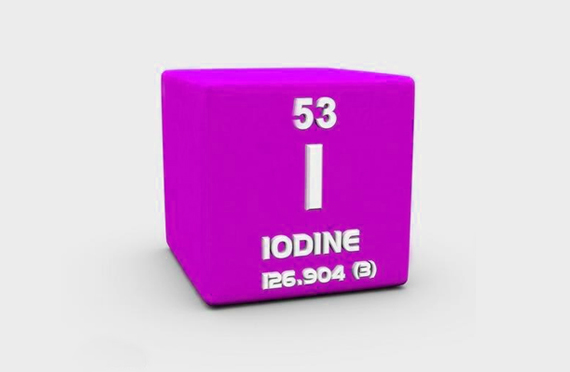
Brief Analysis of Iodine
IODINE is an essential com-ponent of the hormones produced by the thyroid gland.Thyroid hormones, and therefore iodine, are essential for mammalian life. In 1811, Courtois discovered iodine as a violet vapor arising from seaweed ash while manufactur-ing gunpowder for Napoleon’s army. Gay-Lussac identi-fied it as a new element, and named it iodine, from the Greek for “violet.” Iodine was found in the thyroid gland by Baumann in 1895 .
Iodine (as iodide) is widely but unevenly distributed in the earth’s environment. In many regions, leaching from glaciations, flooding, and erosion have depleted surface soilsof iodide,and mostio dideis found in the oceans.

Iodine-deficient soils are common in mountainous ar-eas (e.g., the Alps, Andes, Atlas, and Himalayan ranges) and areas of frequent flooding, especially in South and Southeast Asia (for example, the Ganges River plain of northeastern India). Although many inland areas, includ- ingcentral Asiaand Africa and centra land eastern Europe are iodine deficient, iodine deficiency may also affect.
Coastal and island populations. Iodine deficiency in pop-ulations residing in these areas will persist until iodine enters the food chain through addition of iodine to foods (e.g., iodization of salt) or dietary diversification intro-duces foods produced outside the iodine-deficient area.
In 1917, Marine and Kimball showed that thyroid enlargement (goiter) was caused by iodine deficiency and could be prevented by iodine sup-plementation . Goiter prophylaxis through salt iodiza-tion was first introduced in Switzerland and the United States in the early 1920s.
Iodine deficiency has been recognized as a severe public health problem in China since the 1930s.Data collected between the 1960s and 1990s recorded iodine deficiency of varying degrees in all of China’s provinces . In many endemic areas, 5%–15% of children suffered from mild retardation (intelligence quotient of 50–69) .As a result of these data demonstrating a significant IDD problem, salt iodization interventions were started in endemic areas of China in the 1960s. In 1993, as a follow up to the 1990 United Nations Summit for Children, the National Advocacy Programme for the Elimination of IDD by 2000 was launched.
Related recommendation
- 1.Skrd participates in 2021CACLP with second-generation products
- 2.CMEF2020,Skrd unveiled second-generation products.
- 3. Silky-Road Medical won the title of "High-tech Enterprise"
- 4.Skrd attended the 2021 CMEF exhibition and presented with Iodine detection products
- 5. Silky-Road Medical national clinical Laboratory Quality Assessment report in 2020 was 100% approved
- 6.Skrd invite you to participate in the 18th China Association of Clinical Laboratory Practice Expo
- 7.Skrd attended the 2020 CACLP exhibition and presented with patented products
- 8.Skrd Medical's products have obtained the CE Conformity Certificate
- 9.Silky-Road Medical's 2019 China Clinical Laboratory Quality Evaluation Report was 100% passed
- 10. Silky-Road Medical's first national clinical Laboratory Quality Assessment report in 2020 was 100% approved
- 11.Pregnant women are the key population for urinary iodine testing
- 12.Pregnancy Prepare for Urinary Iodine Test to Have a Healthy Smart Baby
- 13.The importance of iodine for pregnant women
- 14.How to choose automatic iodine detector?
- 15.The neccessery of urinay iodine detection
- 16.Prevention and treatment Iodine deficiency
- 17.Your hair loss may cause by iodine thyroid function
- 18.Scientific Iodine Supplementation for Smarter Life
- 19.Sliky-road intelligemt automatic urinary iodine
- 20.how to choose blood iodine test or urinary iodine test
